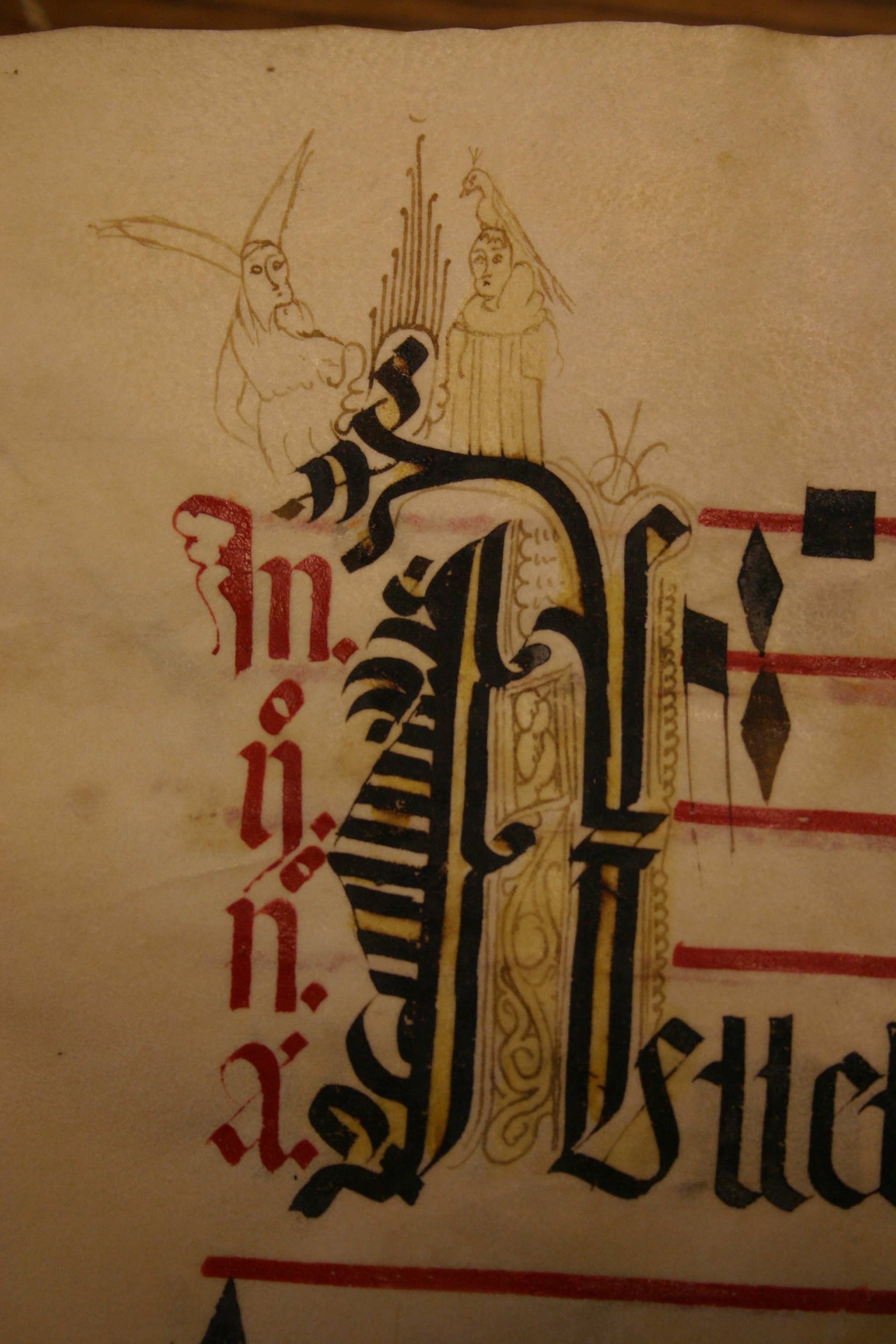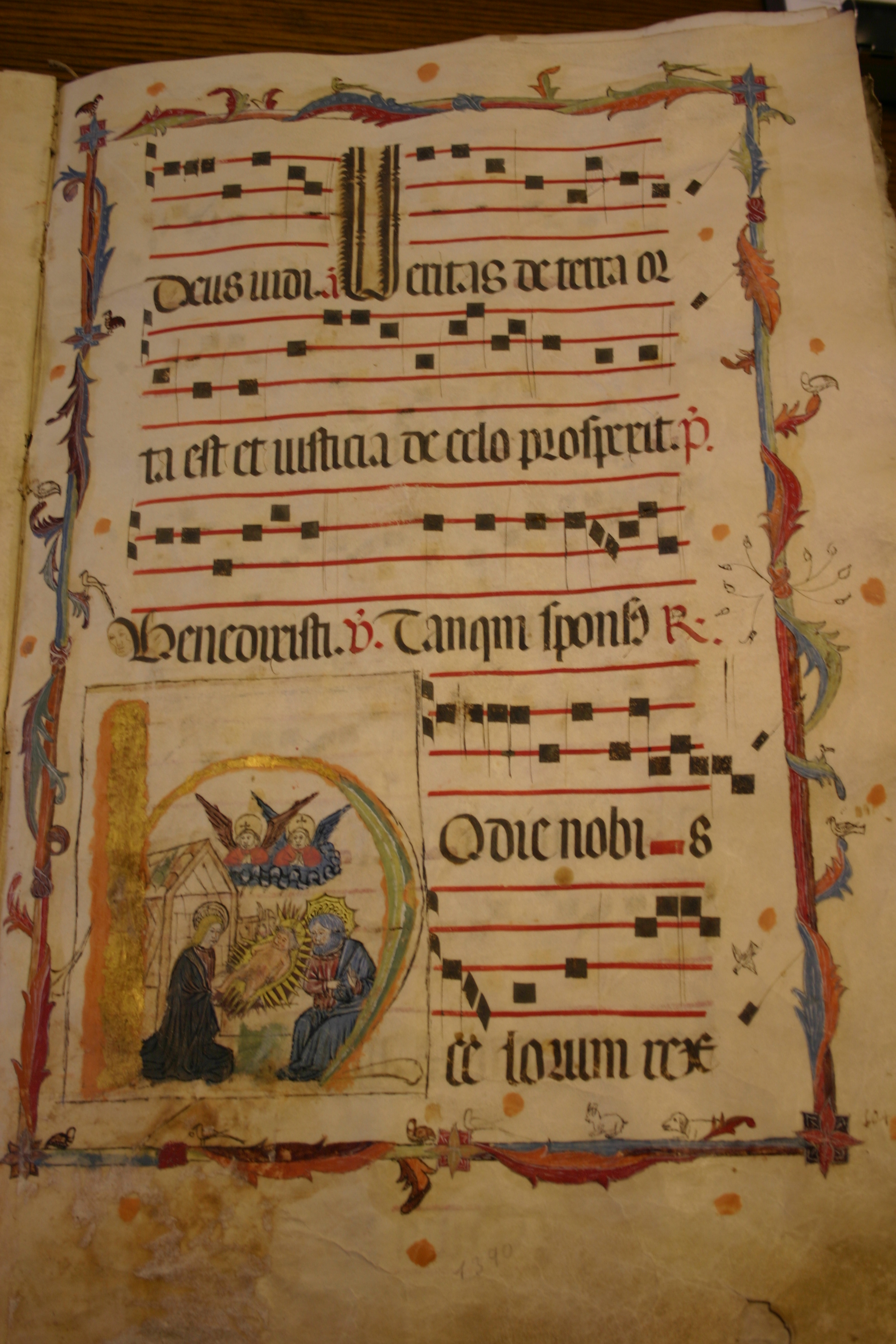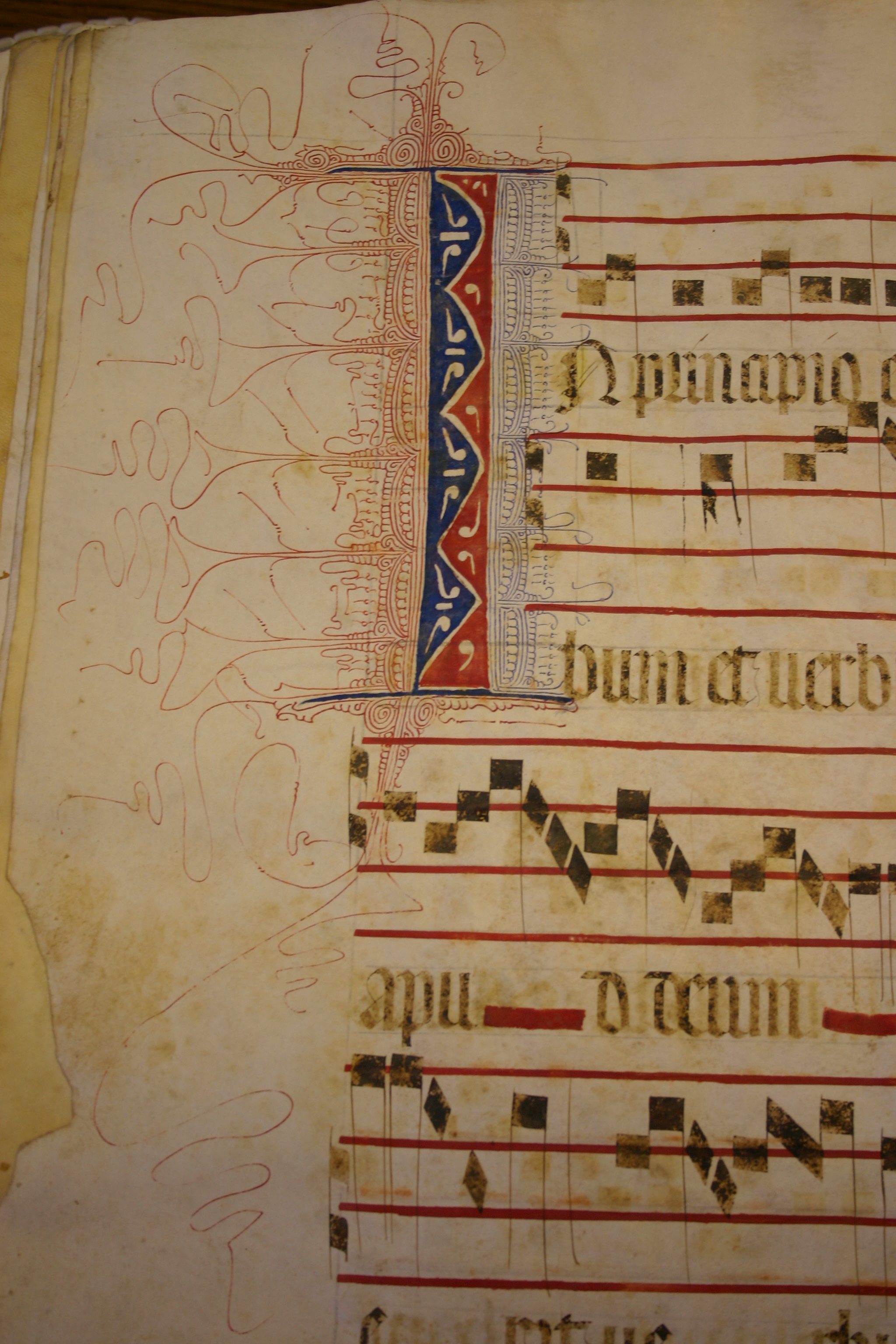Recently donated by Roberta Lynn Hay, Pre-1650 MS 209 is a large and imposing addition to The Rare Book & Manuscript Library of the University of Illinois at Urbana-Champaign. Once used for the observance of the Divine Office, this manuscript is one volume of an incomplete antiphonal of the Temporale cycle of a non-Dominican monastery or church. An antiphon is a response to a Psalm, in this case sung in Gregorian plainchant. This volume’s text provided the antiphons used in a monastery or church for the six-eight week period from the beginning of Advent through the beginning of Ordinary Time (including Nativity, Christmastide, Circumcision, the Epiphany and the Octave of Epiphany).
An antiphonal would traditionally be placed at the front of a choir on a lectern, in good light or under candlelight, so that all of the members of the choir could see the chant. The text for the verse or Psalm only needed to be large enough for an intoner to read, however the response or antiphon needed to be large enough for the entire choir to read. The contents of the codex, in this case, dictated the physical size needed for it to function properly. Because an antiphonal was needed for each order of the Office, it needed to be a very durable and easy-to-use item. The utilitarian aspect of these manuscripts explains why MS 209 is so heavily used, has such thick binding chords, very thick boards, and leaves made from durable parchment.
This manuscript was probably produced in the 15th or 16th century in Spain at a monastery or church for local use. MS 209 was a heavily used manuscript, which is apparent from its current condition. Upon a casual browse, a reader of this manuscript will immediately notice the darker condition and flexibility of the corners of the leaves, due to the amount of page-turning required for each hour of the Office. Some of the leaves have drops of wax found on them, which illustrates that this manuscript was sometimes read under candle-light. In MS 209, certain prayers and songs have been erased and replaced with new prayers or antiphons. The insertion of a new set of antiphons and responses were all probably due to changes within the Catholic Church. This evidence also shows that this manuscript was not a static text, but a fluid thing that could be changed to conform to current trends or rules.
Measuring at over 50 cm tall, MS 209 is the largest music manuscript in the RBML. It is comparable in size and use to a seventeenth-century Spanish Gradual on display at the Music and Performing Arts Library, donated in 2009. (https://www.library.illinois.edu/mpal/about/exhibits/gradual/) DG



